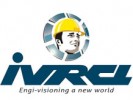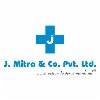Safety Supervisor
50+ Safety Supervisor Interview Questions and Answers for Freshers
Asked in SAPC INDIA

Q. What precautionary measures should be taken while working on mobile scaffolds or any other type of scaffold?
Precautionary measures while working on mobile or any other scaffold
Ensure the scaffold is erected on a firm and level surface
Use guardrails and toe-boards to prevent falls
Inspect the scaffold before use and report any defects
Ensure the scaffold is properly secured to prevent tipping
Do not overload the scaffold beyond its capacity
Use personal protective equipment such as hard hats and safety harnesses
Ensure the scaffold is properly labeled with weight capacity and other safet...read more

Asked in Ivrcl Infrastructures & Projects

Q. How can you manage the site team to follow safety rules?
To manage with site team for following safety rules, effective communication, training, and enforcement are key.
Establish clear safety policies and procedures
Communicate the importance of safety to the team
Provide regular safety training and education
Lead by example and consistently enforce safety rules
Encourage reporting of safety concerns and near misses
Conduct regular safety inspections and audits
Recognize and reward safe behavior
Address safety issues promptly and take cor...read more

Asked in Talwandi Sabo Power

Q. What is confined space ?what is permit and types of permit?
Confined space is an area with limited entry and exit points, not designed for continuous occupancy. Permit is a written document that authorizes entry into a confined space.
Confined space has limited entry and exit points
It is not designed for continuous occupancy
Examples include tanks, vessels, silos, sewers, etc.
Permit is a written document that authorizes entry into a confined space
Types of permit include entry permit, hot work permit, and excavation permit

Asked in SABIC

Q. How can we determine if scaffolding is suitable for heavy or light loads?
The load capacity of a scaffold can be determined by its design and specifications.
Check the manufacturer's specifications for the scaffold
Consider the weight of the materials and equipment that will be placed on the scaffold
Ensure that the scaffold is designed and constructed to meet the load requirements
Consult with a qualified engineer or scaffold designer if necessary

Asked in Bechtel

Q. What is the LOTO system?
LOTO system stands for Lockout/Tagout system, which is a safety procedure used to ensure that dangerous machines are properly shut off and not started up again until maintenance or repairs are completed.
LOTO system is used to control hazardous energy sources during maintenance or repair work.
It involves locking and tagging the energy-isolating devices to prevent accidental startup.
The system helps protect workers from hazardous energy releases and potential injuries.
It is ess...read more

Asked in SABIC

Q. Tell me the parts of scaffolding.. What is the purpose of cross bracing..
Scaffolding parts include standards, ledgers, transoms, and cross braces. Cross bracing provides lateral stability to the scaffold.
Scaffolding parts: standards, ledgers, transoms, and cross braces
Cross bracing prevents lateral movement of the scaffold
Cross braces should be installed diagonally in both directions for maximum stability
Safety Supervisor Jobs




Asked in Talwandi Sabo Power

Q. What is scaffolding, and what are the different types of scaffolding?
Scaffolding is a temporary structure used to support workers and materials during construction or maintenance work.
Types of scaffolds include suspended, supported, rolling, and aerial lifts.
Scaffolds must be designed and erected by a competent person and inspected regularly.
Workers must be trained on proper use and safety measures when working on scaffolds.
Common hazards associated with scaffolds include falls, electrocution, and falling objects.

Asked in Epsilon Carbon

Q. What are the responsibilities of a safety officer?
The responsibility of a safety officer job is to ensure the safety of employees and the workplace.
Develop and implement safety policies and procedures
Conduct regular safety inspections and audits
Train employees on safety protocols and procedures
Investigate accidents and incidents and provide recommendations for improvement
Ensure compliance with local, state, and federal safety regulations
Maintain safety records and reports
Collaborate with management to create a culture of saf...read more
Share interview questions and help millions of jobseekers 🌟


Asked in SRR Projects

Q. What are the responsibilities related to safety in the workplace?
Safety supervisors ensure a safe work environment by implementing policies, conducting training, and monitoring compliance with regulations.
Conduct Safety Training: Regularly train employees on safety protocols, such as proper lifting techniques to prevent injuries.
Risk Assessment: Identify potential hazards in the workplace, like slippery floors, and implement measures to mitigate these risks.
Incident Reporting: Establish a system for reporting accidents or near misses, ensu...read more

Asked in Rotostat Services

Q. How many steps are there in a risk assessment?
There are generally five steps in a risk assessment process.
Identify hazards and potential risks
Assess the likelihood and severity of each risk
Evaluate current control measures
Implement additional control measures if necessary
Review and monitor the effectiveness of control measures

Asked in Cherry Hill Interiors

Q. Explain hazard and prevention control within a safety management plan.
Hazard and prevention control is an essential part of a safety management plan.
Identify potential hazards in the workplace
Develop and implement prevention measures
Train employees on safety procedures
Regularly review and update the safety management plan
Examples of prevention measures include personal protective equipment, safety signage, and emergency response plans

Asked in Om Engineering

Q. What are the responsibilities of a safety supervisor?
A safety supervisor ensures workplace safety by implementing policies, conducting training, and monitoring compliance with regulations.
Develop and implement safety policies and procedures to minimize risks.
Conduct regular safety audits and inspections to identify hazards.
Provide safety training and education to employees, such as emergency response drills.
Investigate accidents and incidents to determine root causes and prevent recurrence.
Ensure compliance with local, state, a...read more

Asked in L&T Construction

Q. At what depth is an excavation permit required?
Excavation permits are typically required for depths exceeding 1.2 meters to ensure safety and compliance with regulations.
Excavation permits are generally required for depths greater than 1.2 meters.
For example, in many jurisdictions, a permit is mandatory for any excavation deeper than 1.2 meters.
This requirement helps to manage risks such as cave-ins and underground utility strikes.
Different regions may have specific regulations, so it's essential to check local laws.
Asked in Sharanam Engineering

Q. How does your lifestyle promote safety?
My commitment to safety extends beyond the workplace and influences my daily decisions and habits.
I always wear my seatbelt when driving, even for short distances.
I regularly check the expiration dates on household products and medications to ensure they are safe to use.
I prioritize proper nutrition and exercise to maintain my physical health and reduce the risk of accidents.
I take precautions when participating in recreational activities, such as wearing a helmet when biking...read more

Asked in Talwandi Sabo Power

Q. What is risk and risk assessment?
Risk is the possibility of harm or loss. Risk assessment is the process of identifying, analyzing and evaluating potential risks.
Risk is the likelihood of an event occurring that could cause harm or loss
Risk assessment involves identifying potential hazards and evaluating the likelihood and severity of harm
Risk assessment helps to prioritize and implement measures to control or mitigate risks
Examples of risk assessment include workplace hazard assessments, environmental impac...read more

Asked in KEC International

Q. What is Emergency Response Planning (ERP)?
Emergency Response Planning (ERP) involves preparing for and managing emergencies to ensure safety and minimize impact.
Identifies potential emergencies, such as fires, chemical spills, or natural disasters.
Establishes clear procedures for evacuation and communication during emergencies.
Conducts regular training and drills to ensure readiness among staff.
Involves coordination with local emergency services and stakeholders.
Includes post-incident analysis to improve future respo...read more

Asked in KEC International

Q. How do you report a safety incident or near-miss?
Reporting a safety incident involves documenting details, notifying supervisors, and following protocols to prevent future occurrences.
Immediately assess the situation for safety and provide first aid if necessary.
Document the incident details, including time, location, and individuals involved.
Notify your supervisor or safety officer as soon as possible.
Complete an incident report form, detailing the nature of the incident and any witnesses.
Analyze the incident to identify r...read more

Asked in IRC Engineering Services India

Q. What are unsafe acts and unsafe conditions?
Unsafe acts are behaviors that can lead to accidents, while unsafe conditions are environmental factors that increase risk.
Unsafe Acts: Actions like ignoring safety protocols, such as not wearing personal protective equipment (PPE) in hazardous areas.
Unsafe Conditions: Situations like wet floors or poorly maintained equipment that can lead to slips, trips, and falls.
Examples of Unsafe Acts: Operating machinery without proper training or using faulty tools.
Examples of Unsafe C...read more
Asked in Kina Engineering & Contractors

Q. How many types of fire extinguishers are there?
There are several types of fire extinguishers, each designed for specific classes of fire hazards.
Class A: For ordinary combustibles like wood and paper (e.g., water extinguishers).
Class B: For flammable liquids such as gasoline and oil (e.g., foam extinguishers).
Class C: For electrical fires (e.g., CO2 extinguishers).
Class D: For combustible metals (e.g., dry powder extinguishers).
Class K: For cooking oils and fats (e.g., wet chemical extinguishers).
Asked in Aj Engineering

Q. Why is safety important for everyone?
Safety is important for all to prevent accidents, injuries, and fatalities.
Safety ensures the well-being of employees and the public.
It reduces the risk of accidents, injuries, and fatalities.
It increases productivity and reduces costs associated with accidents.
It helps to maintain compliance with regulations and laws.
Examples: wearing personal protective equipment, following safety procedures, maintaining equipment, and providing training.

Asked in J. Kumar Infraprojects

Q. Hazard Identification Risk Assessment most important
Hazard identification and risk assessment are crucial for ensuring safety in any workplace.
Identifying potential hazards and assessing the risks associated with them is essential for preventing accidents and injuries.
This process involves analyzing the work environment, equipment, and procedures to identify potential hazards and evaluate the likelihood and severity of harm.
Examples of hazards that may be identified include chemical exposure, falls, electrical hazards, and erg...read more

Asked in ArcelorMittal Nippon Steel

Q. What is hot work and what are its hazards?
Hot work refers to any work that involves open flames, sparks, or high temperatures, posing fire and burn hazards.
Examples of hot work include welding, cutting, brazing, soldering, and grinding.
Hazards of hot work include fire, burns, explosions, and toxic fumes.
Proper safety measures such as fire watch, personal protective equipment, and hot work permits are essential to prevent accidents.
Training workers on safe hot work practices and conducting regular inspections can help...read more

Asked in KEC International

Q. What are the different types of hazards?
Hazards are potential sources of harm or adverse effects on individuals or the environment, categorized into various types.
Physical Hazards: Examples include machinery, heights, and slippery surfaces.
Chemical Hazards: Involves exposure to harmful substances like acids, solvents, or pesticides.
Biological Hazards: Includes bacteria, viruses, and other pathogens that can cause illness.
Ergonomic Hazards: Related to repetitive movements or poor workstation design, leading to muscu...read more

Asked in J Mitra And Co

Q. What is the definition of risk?
Risk is the potential for loss or harm arising from a hazard, often assessed in terms of likelihood and impact.
Risk involves uncertainty about outcomes, such as the chance of an accident occurring at a workplace.
It can be quantified by evaluating the probability of an event and its potential consequences, e.g., a fall from height.
Risk can be categorized into different types, such as operational risk (e.g., machinery failure) and financial risk (e.g., market fluctuations).
Effe...read more

Asked in Nuclear Power Corporation of India

Q. Why are toe boards used in scaffolding?
Toe boards are used in scaffolds to prevent tools and materials from falling off and to provide additional safety for workers.
Toe boards are installed along the edge of a scaffold platform to create a barrier and prevent objects from rolling or sliding off.
They are typically made of wood or metal and are securely attached to the scaffold structure.
Toe boards also serve as a visual reminder for workers to be cautious near the edge of the scaffold.
They help maintain a safe work...read more

Asked in Shapoorji Pallonji Group

Q. What is the definition of safety?
Safety is the condition of being protected from harm, danger, or injury, ensuring well-being in various environments.
Risk Management: Identifying potential hazards in the workplace, such as slippery floors, and implementing measures to mitigate them.
Compliance with Regulations: Adhering to safety standards set by organizations like OSHA to ensure a safe working environment.
Training and Education: Providing employees with safety training, such as fire drills or proper equipmen...read more

Asked in Tata Steel

Q. What is meant by positive isolation?
Positive isolation ensures that a system is completely separated from potential hazards, preventing accidental exposure or contamination.
Involves physical barriers to prevent hazardous energy or substances from entering a system.
Examples include lockout/tagout procedures in industrial settings.
Used in medical settings to prevent cross-contamination between patients.
Involves the use of valves, blinds, or other devices to isolate systems safely.

Asked in Cholamandalam MS Risk Services

Q. Tell me about construction safety.
Construction safety involves implementing measures to prevent accidents and injuries on construction sites.
Ensuring all workers are properly trained in safety procedures
Regularly inspecting equipment and tools for safety hazards
Implementing fall protection measures such as guardrails and harnesses
Enforcing strict adherence to safety regulations and protocols
Providing personal protective equipment (PPE) for all workers

Asked in Ambuja Cements

Q. What is work at height?
Work at height refers to any activity that takes place above ground level where there is a risk of falling and causing injury.
Work at height includes tasks such as working on ladders, scaffolding, rooftops, or elevated platforms.
It involves activities like construction, maintenance, installation, or repair work.
Safety measures like fall protection systems, guardrails, and personal protective equipment (PPE) are crucial.
Examples of work at height include painting a tall buildi...read more
Asked in Sharanam Engineering

Q. What is the importance of safety in our world?
Safety in our world refers to measures taken to prevent harm, injury, or danger to individuals or property.
Safety involves identifying and assessing risks in the environment.
It includes implementing safety protocols and procedures to mitigate risks.
Training employees on safety practices and ensuring compliance with safety regulations is crucial.
Examples of safety measures include wearing personal protective equipment, conducting regular safety inspections, and emergency respo...read more
Interview Questions of Similar Designations
Interview Experiences of Popular Companies








Reviews
Interviews
Salaries
Users

















